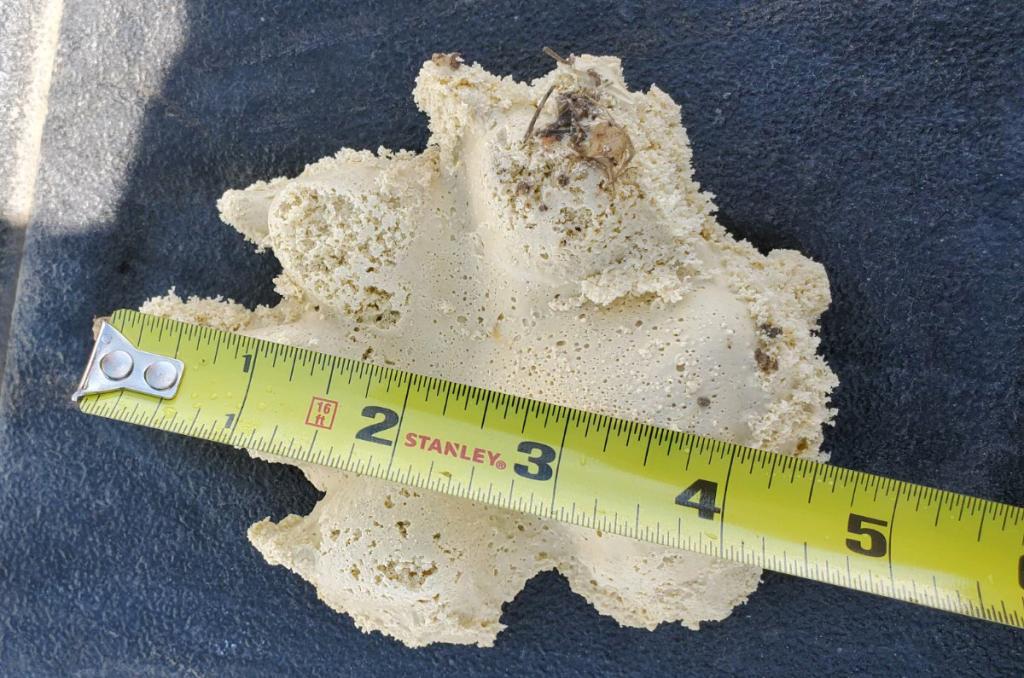CPW investigates wolf sighting report from Park County, test confirms animals were domestic dogs


Please direct media inquiries to CPW Public Information Supervisor Travis Duncan.
FAIRPLAY, Colo. - Video of a suspected wolf pack captured Monday, April 25 in Park County, roughly eight miles south of the town of Fairplay, sparked an investigation by Colorado Parks and Wildlife officials after the footage circulated widely on social media.
Shortly after the initial sighting, the Park County Sheriff’s Office released information from what they received that it was believed to be a group of large cross-breed St. Bernard dogs that had escaped their enclosure near the area of the sighting. Having that knowledge from the local authorities aided wildlife officers as they began to search for any evidence that might corroborate the report.
“We take a conservative approach to stating whether or not there are wolves in a particular area, and this case is an example as to why we do not have an immediate reaction or public response,” said Eric Odell, CPW’s Species Conservation Program Manager.
After receiving the report Monday evening, wildlife officers went to great lengths to make an informed, science-based decision on whether the sighting and video was of wolves or not.
“Especially on something as sensitive as a wolf sighting, we always want to do everything in our power to investigate it to the best of our ability to confirm, or not confirm what it is,” said Mark Lamb, Area Wildlife Manager for CPW’s Area 1 that is based out of Fairplay. “We want to make sure that we are doing our due diligence and making sure everything is correct before we start releasing any information.”
There were a number of steps taken in the investigation to look for proof or evidence to determine what the video was of.
Wildlife officials met with the reporting party late Monday to dial in on the exact location of the sighting. They waited until sunrise Tuesday morning to scout the area, allowing the cool overnight temperatures to provide for the best opportunity for potential tracks to harden in the snow.
During the site investigation, three wildlife officers found canid tracks and made a cast of a set in the snow for analysis. A drop of blood was collected as well as two separate hair samples and two urine samples, which were sent off to a laboratory for genetic analysis. A howling survey was also conducted in both the morning and in the evening on Tuesday.
The collected samples were submitted to a USDA Animal and Plant Health Inspection Service (APHIS) laboratory for genetic testing. The results came back on May 5, all confirming it to be a domestic dog.
The site investigation did not reveal any signs of an elk carcass, which was also originally reported to be affiliated with the sighting.
On the morning of Wednesday, April 27, wildlife officials searched the immediate vicinity and greater surrounding area in a grid format from an airplane. They did not discover any elk carcasses from the air or other signs of potential canid tracks, only spotting numerous elk, a bobcat and a lone coyote.
“The flight allowed us to try and cover our bases to make sure that if they were wolves and they moved, that we were able to detect any sign of wolf activity,” Lamb said. “That would be looking for any dead wildlife, which we didn’t discover. For a pack of four to five wolves, we would have found some deer or elk carcasses or livestock carcasses and we didn’t find anything, even where the initial report came in.”
The track sample documented at the site measured 4-4.5-inches in length. There could be some fluctuations in the actual size of the track due to any snow melt that may have occurred on Monday afternoon in the sunlight.
Although some dog breeds can have tracks greater than four inches in length, in general, if a four-inch or greater canid track is observed, the probability that it may be a wolf is increased. Due to some overlap in size or the substrate the track was made in, track identification can be challenging.
This investigation demonstrated how relying on single sources of information might be misleading.
“We are thankful to the people that reported it so we could look into it and know for certain, at least with this one particular case,” Lamb said.
Think you’ve seen a wolf in Colorado? Help biologists by filling out the CPW Wolf Sighting Form.
“I think it is very important that the public continues to let us know if they think they’ve seen a wolf by going to our online wolf report form,” Lamb said. “We are paying attention to these reported sightings to see what is going on. We evaluate what information the public gives us to the best of our ability and will take the next steps when we feel that we need to.”
Not all sightings or reports will generate a response by wildlife officers. Each report is evaluated individually. Responses by CPW vary and the Wolf Sighting Form is an important piece of the decision-making process.
For more information and updates, visit CPW’s Wolf Management page.
Colorado Parks and Wildlife (CPW) is an enterprise agency, relying primarily on license sales, state parks fees and registration fees to support its operations, including: 43 state parks and more than 350 wildlife areas covering approximately 900,000 acres, management of fishing and hunting, wildlife watching, camping, motorized and non-motorized trails, boating and outdoor education. CPW's work contributes approximately $6 billion in total economic impact annually throughout Colorado.
DISCLAIMER: The Colorado Parks and Wildlife (CPW) website maintains press releases containing historical information that may no longer be accurate. Press releases are dated, which should be noted to determine whether the information provided is current. Please review our current regulations and brochures for up-to-date information.
 Travis Duncan
Travis Duncan